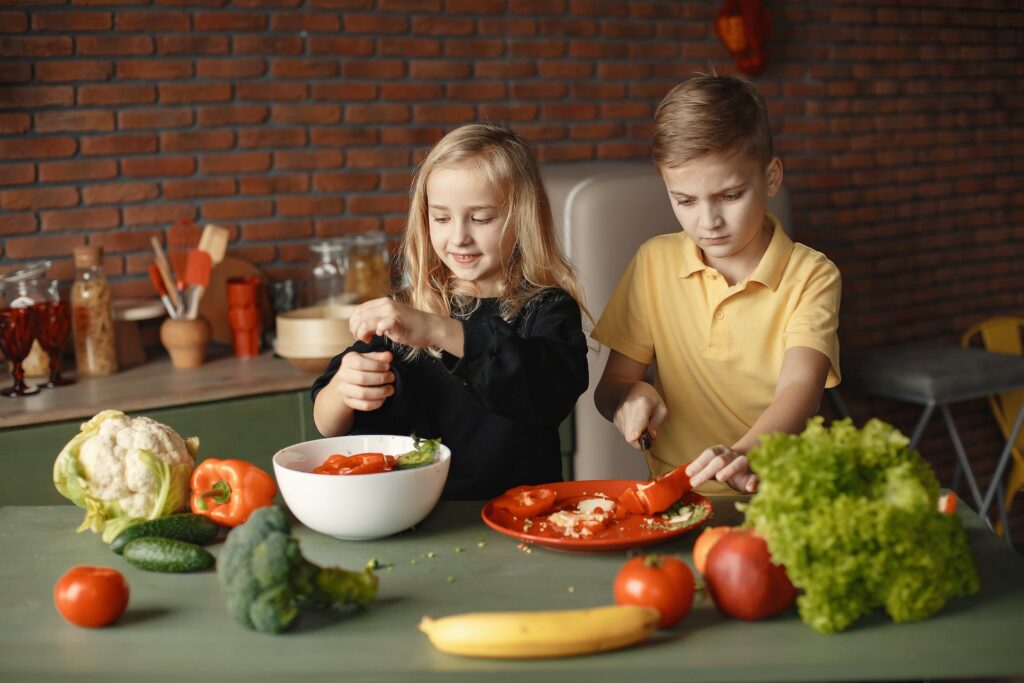One of the most effective ways to stimulate learning in preschoolers is to engage them in fun and witty food and nutrition activities. Since children love food and are not so fond of education, the best method of bringing them down to learn is to play food games with them. This way, they get to know a thing or two about foods, the various nutrients, their effects, etc., and also get to understand a few other things.
For those who are confused about the way to go about this, here are some food and nutrition workouts that preschoolers will undoubtedly love
1. Compile images of different foods
You can get a collection of old magazines, pamphlets, and other pictorial evidence of various foods. Prepare the kids to cut out several food pictures to test their proficiency in food recognition.
This technique should familiarize the kids with the different micronutrients and their effects on the body. They would begin to understand the difference between proteins, fats, and carbohydrates. As stated earlier, the main objective of this activity is to familiarize the kids with the different available foods, their names, and their nutritional values.
2. Micronutrient education.
Another entertaining and practical technique of educating preschoolers about nutrition is teaching them the crucial micronutrients (vitamins and minerals) and what they do to the body, for example. We can teach them about Vitamin A and how it is suitable for eye health or how Vitamins B is needed for energy production. Other micronutrient and their importance should be told to them; for instance,
- Vitamin C for adequate Immune health
- Zinc helps in wound recovery.
- Vitamin E Protects cells.
- Vitamin K is crucial for blood clotting
- Calcium is vital for bone health
- Iron is essential for body tissues.
3. Try Cooking with the kids.
Cooking with the kids is an incredible opportunity to expand their knowledge. It is also a fun and entertaining process for kids of all ages.
You can decide to make them either simple or complex as you believe your audience should be able to accumulate.
You can try blindfolding the kids. By doing this, we can stimulate other senses and investigate the source of the spice, flavor, and understanding of different foods. This activity can also make preschoolers fall in love with cooking and enable them to be better cooks shortly.
4. You can make the kids propose various recipes.
You can have each kid make good ideas on the best recipe to prepare a specific meal, no matter how these ideas may sound. Or everyone performs an exchange whereby each kid gets a particular recipe to take home. You can select it as an exhibit depending on the number of kids with you.
The kids can discuss their different recipes, what they like, and when they usually have them. Maybe it’s the family’s weekend pizza and mashed eggs recipe, and they want it served with fruit within their family.
It is a rewarding procedure assisting kids in knowing how to have regular foods that are healthy and not just going out for any food.
5. Sugar level experiment.
Most preschoolers like sugars, and we know sugar may not be suitable for little kids. We can draw to their attention the harmful consequences of excessive sugar consumption.
At this point, the “sugar demo test” becomes useful. It is a visual demonstration of how much-added sugars are in food commodities. It is commonly conducted on beverages, but you can try it on yogurt, snacks, or confectionery. The kids should find this technique fun, educating, and exciting.





